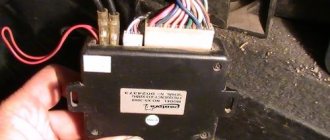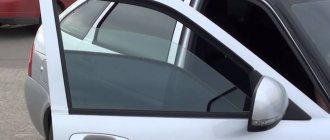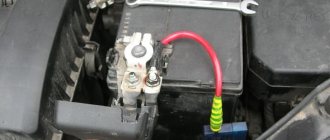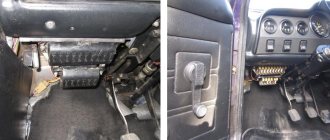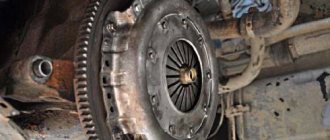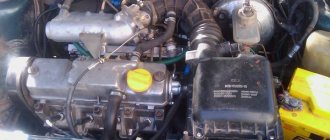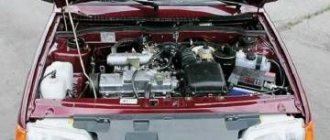It is well known that the car radio is traditionally the main device in the car in the list of peripheral equipment for the entertainment of the driver and passengers. As a rule, it is music in the car that allows the driver to safely combine the processes of driving the vehicle and listening to audio content.
Taking into account the fact that today CDs and MP3s, which a few years ago were the main digital media, have faded into the background, the main source has become USB flash drives or simply flash drives for car radios, all kinds of memory cards, etc.
This solution is affordable, universal, simple, compact, spacious and convenient. In this case, the most common problem is when the radio does not see a flash drive or memory card, and also stops reading it. Let's take a closer look at the reasons why the car radio does not read the flash drive, and also what can be done in such a situation.
Car radio with USB input
Most modern car radios have a USB input for reading audio files from a flash drive. This method of storing and reproducing audio information is more reliable, noise-resistant, informative and convenient from a consumer point of view than CDs and DVDs.
Many manufacturers are gradually abandoning disk drives in favor of USB and other electronic storage media.
However, the playback method via a USB port has one fundamental drawback: some flash drives and various car radios refuse to be read. Moreover, a situation very often occurs when one radio tape recorder reads the same flash drive without problems, but the other completely refuses to “see” it.
Failure to read the flash drive by the radio due to poor contact in the connector
Quite often, the radio tape recorder stops reading the flash drive due to poor contact or its absence with the audio system connector. The seat for the USB flash drive is damaged due to frequent connection and disconnection of the drive. It is quite simple to eliminate such a defect using a soldering iron and a spare connector; let’s look at how such work is done using the example of a JVC car radio:
- Unscrew the screws on the back side of the removable panel;
- We separate the halves of the plastic case and remove the board (it is secured with latches). It is important during disassembly not to lose the spring for tilting the panel;
- Use a soldering iron to solder the old connector and install a new socket instead;
- install the board into the case and assemble the panel.
If during disassembly we find that there is poor soldering on the contacts, before changing the plug, we first try to solder it. It may happen that replacing the socket is not required, only soldering will be enough.
Related articles:
- How to reduce fuel consumption on a UAZ Patriot SUV Potential buyers always ask a question that worries them - what is the fuel consumption of a UAZ Patriot car per 100 km? Consumption data is given in the technical specifications of the car, only [...]
- Friction discs in an automatic transmission: replacement, cost Like any parts in a car, friction discs wear out over time, and they can fail for other reasons. This article will look at the symptoms of a malfunction [...]
- Features of 1st generation Ford Focus cars The American Ford Focus car has been mass-produced since 1998; in Russia this model is very popular. The brand is in good demand not only in the Russian Federation – in [...]
Why doesn't the radio read the flash drive in the car?
The main reasons that the car radio does not see the USB flash drive are:
1. Lack of file system support for the car radio
, in which the flash drive is formatted.
Most car radios produced before 2010 support FAT32 USB file systems. If the radio is even older, then it can only support the FAT16 file system.
New car radios, especially standard ones, may have support for the NTFS file system, and if the media is formatted in FAT32, which is more “ancient” from their point of view, problems may arise when reading audio information.
If there is no reliable information on the radio (technical characteristics) about what file system the USB port driver supports, in many cases you have to sequentially reformat the flash drive to FAT32, then to NTFS, respectively, write test audio files to it.
This can only be done using a computer (laptop, netbook). To do this, right-click on a removable disk (flash drive) connected to the computer, select “formatting” in the context menu
and then the corresponding file system.
2. Inability to read audio files stored in folders with a complex hierarchy
. Car radios produced before 2000 and inexpensive FM transmitters suffer from this disease.
If the playlist has subfolders, for example, such as root directory - Russian songs - folk - babkina, then perhaps it will not be possible to enter some folders remote from the root directory.
Therefore, on radios made before 2000, it is better to record audio files in the root directory, especially since using a computer it is not difficult to create and rewrite any playlist.
3. Exceeding flash storage capacity requirements
. Over time, the capacity of USB storage devices is rapidly increasing. Flash drives up to 8 GB, as a rule, are read by all car radios. Regarding the installation of higher-capacity media, you should check how much capacity, inclusive, is supported by the radio installed in your car.
4. Incorrect (most likely Russified) names of audio files
and folders. At best, what most non-Russian radio tape recorders do is to write the names of audio files in the form of Russian hieroglyphs, at worst, they refuse to read them.
Video - why the flash drive does not work in the car and how to format it:
If folder names are written in Russian, access to these folders may be denied. In any case, if a non-Russian radio model is installed in the car, it is better to rename the files and folders to English characters when creating a playlist on a flash drive.
5. Inability to read audio files recorded in other formats
associated with the lack of appropriate codecs. Many audio files can have different origins: downloaded from the Internet, recorded from a DVD, sent by friends. Therefore, their formats may differ.
Each car radio has a set of codecs that determine the types of audio files that can be played. When buying a radio, you need to pay attention to this fact. As a rule, the standard set includes the most common mp3 and wav formats. Good radios support most known formats.
But, if you inherited an old radio tape recorder, and the recording has musical value, it can always be re-encoded using special converter programs on your computer.
6. Radio software crashes
, often found in multimedia complexes with an Internet connection in case of virus infection. Nowadays, it is not uncommon for even radios connected to the Internet to start mining. At the same time, its resources are limited to almost zero. Even the usual codecs are not fast enough, and the audio file slows down or does not play at all. The same effect can be obtained by catching some kind of virus, even from a music flash drive.
Advice: check flash drives for viruses (at least with a simple antivirus program) before installing it in the radio.
7. Technical difficulites
(damage to the USB connector, driver, problems with the power bus). Such problems often occur when they try to use the USB connector of the radio to charge car gadgets.
Remember: in most car radios, a USB connector is provided only for installing a working flash drive (unless an additional purpose is specified in the technical specifications of the radio).
8. In car radios (or flash drives) of dubious origin there is another reason - “ for no reason at all.”
" Flash drives on which information is recorded in completely identical formats with the same file system and volume, one is readable, the other is not. In this case, you have to individually select flash drives for the radio, and nothing can be done.
Main reasons
There are not so many main reasons, there are only five of them and they are banal.
1) Large amount of memory . Typically, the manufacturer indicates in the car’s owner’s manual what the maximum volume your radio can play. I have this maximum volume of 4 GB. If I insert it into 16 GB, then the audio system simply does not perceive it. And accordingly, such a flash drive will not be readable
2) Incorrect file system . Usually the file system supported by car radios is FAT32 , if your flash drive has any other file systems, for example NTFS, then the music will also not be played. You can view the file system on a personal computer (PC). Just insert the drive and click - right mouse button - then properties - look for the “file system” item, it should be FAT32.
3) Has the correct size and the correct file system . Yesterday the music was played from it, but today it is not. This also happens. Moreover, if you insert “USB” into the computer, it sees it and plays music, but the car radio does not want to play media (this is exactly what happened to me in my Chevrolet AVEO). Everything is very simple, errors can accumulate on the USB-Flash itself. We need to format it. ATTENTION! When formatting, all data will be lost, so we copy it to the computer. Detailed instructions for this operation will be below.
4) The media is not machine readable, not readable by a computer, but is detected as a removable disk . Again you need to do formatting. But the information will no longer be saved, you simply will not be able to rewrite it - because it is not readable. If it’s music, then it doesn’t matter, you can upload a new one from your PC.
5) If it is not readable in a car, it is not readable on a computer . The PC writes - the device was found, but not identified, and this is on different computers (check on at least three). There is nothing good here anymore. Looks like she's dead. Just buy a new one. If on some PC it is recognized as a removable disk, read point 4.
How to decipher the error code and fix it
Some “smart” car radios report information on the display that they specifically do not like about the USB storage device.
For example, these error codes:
- ERROR 23 – FAT32 or NTFS file system mismatch;
- ERROR-PROTECT – absence of Windows Media codec in the radio;
- CHECK USB – USB port power supply error;
- ERROR 19 – Cyrillic in file names, complex hierarchy, lack of an appropriate codec, etc.
For other types and error codes, please refer to the owner's manual for your specific brand of car stereo.
Tips and tricks
As practice shows, if a flash drive does not work when connected to a radio, then in most cases there are problems with the drive. It also happens that the drive works on the PC, but the radio does not see it. In this case, you should make sure that the drive is compatible with the radio, and also try to format the flash drive.
If the radio itself turns out to be problematic, a “hard” reboot can also often solve the problem. At the same time, you can reflash the device, especially if there is an updated version of the software.
We also recommend reading the article about the pros and cons of the AUX output on the radio. From this article you will learn what the AUX output of a radio is, how to use it correctly, and how it differs from USB outputs, etc.
However, in a situation where you need to repair a radio, without experience and qualifications, it is better to give up trying to restore the device’s functionality with your own hands. This is especially true when it comes to a standard factory radio, which is often very expensive.
The fact is that modern equipment is complex, that is, it is often simply impossible to repair a radio at home without the appropriate equipment. The right decision would be to contact a service center that performs all work with a guarantee. In fact, a high-quality repair will definitely be much cheaper than a new device.
